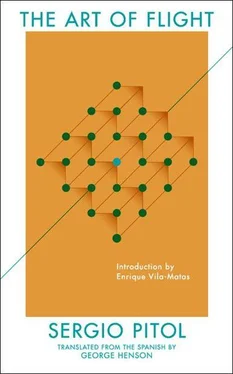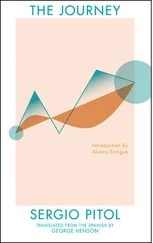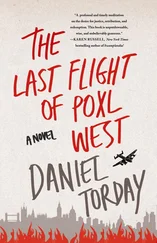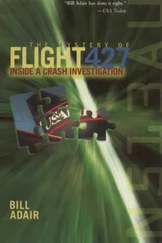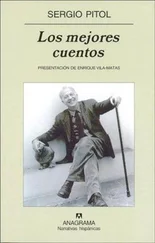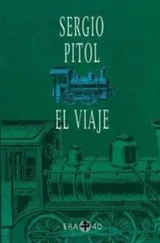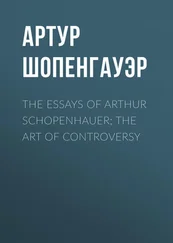Sergio Pitol - The Art of Flight
Здесь есть возможность читать онлайн «Sergio Pitol - The Art of Flight» весь текст электронной книги совершенно бесплатно (целиком полную версию без сокращений). В некоторых случаях можно слушать аудио, скачать через торрент в формате fb2 и присутствует краткое содержание. Год выпуска: 2015, Издательство: Deep Vellum, Жанр: Современная проза, на английском языке. Описание произведения, (предисловие) а так же отзывы посетителей доступны на портале библиотеки ЛибКат.
- Название:The Art of Flight
- Автор:
- Издательство:Deep Vellum
- Жанр:
- Год:2015
- ISBN:нет данных
- Рейтинг книги:5 / 5. Голосов: 1
-
Избранное:Добавить в избранное
- Отзывы:
-
Ваша оценка:
- 100
- 1
- 2
- 3
- 4
- 5
The Art of Flight: краткое содержание, описание и аннотация
Предлагаем к чтению аннотацию, описание, краткое содержание или предисловие (зависит от того, что написал сам автор книги «The Art of Flight»). Если вы не нашли необходимую информацию о книге — напишите в комментариях, мы постараемся отыскать её.
The first work in Pitol's "Trilogy of Memory," The Art of Flight imaginatively blends the genres of fiction and memoir in a Borgesian swirl of contemplation and mystery, expanding our understanding and appreciation of what literature can be and what it can do.
The Art of Flight — читать онлайн бесплатно полную книгу (весь текст) целиком
Ниже представлен текст книги, разбитый по страницам. Система сохранения места последней прочитанной страницы, позволяет с удобством читать онлайн бесплатно книгу «The Art of Flight», без необходимости каждый раз заново искать на чём Вы остановились. Поставьте закладку, и сможете в любой момент перейти на страницу, на которой закончили чтение.
Интервал:
Закладка:
The novelist thinks about his heroine’s ensuing movements; he begins to mentally style the language; he imagines he will finish the story in a few days and return to the abandoned plot in Madeira, its characters, the dressmaker (now rid of her theosophist friend), the dynamite explosion, the exercises the injured young man does to regain movement, his falls, the cruel discipline to which he is subjected, unaware that Chiquitita’s triumphs and tribulations during her stay in Córdoba would not end anytime soon, that the story he had just started would turn into a novel he would have to live with for several years and where perhaps there might appear a young farmer from Tierra Blanca, Veracruz, who was left paralyzed and blind in one eye mishandling dynamite, and an astute seamstress determined to have him and his property. Over time, the novelist will come to forget that the story came from a dinner at the Portuguese embassy in Prague. And were the social event ever able to penetrate his memory, he would only vaguely remember an ambassador’s wife, probably French, for having unleashed an endless monologue about Parisian haute couture and its most celebrated names. In short, he would consider this incident as one of many moments of diplomatic routine during which he overheard exasperatingly detailed descriptions of locations and situations only to forget them a moment later, and he would never connect it with the appearance of Chiquitita, her misfortunes in Córdoba, and her intrepid fight to defeat — by human intervention, unimaginable tricks, and astral assistance — her enemy relatives until recovering the portion of the inheritance that belonged to her as well as a portion that did not. A novelist is shocked at the sudden appearance of an uninvited character; he often confuses sources, the migration of the characters, the transmutation of karma, to quote Chiquitita and also Thomas Mann, who understood those surprises very well.
The last novel by José Donoso, Dónde van a morir los elefantes (Where Elephants Go to Die), carries an epigraph from William Faulkner that illuminates a novelist’s relationship with his work in progress: “A novel is a writer’s secret life, the dark twin of a man.”
A novelist is someone who hears voices through the voices. He crawls into bed, and suddenly those voices force him to get up, to look for a sheet of paper and write three or four lines, or just a couple of adjectives or the name of a plant. These features, and a few others, cause his life to bear a striking resemblance to that of the deranged, which doesn’t bother him in the least; on the contrary, he thanks his muses for having transmitted these voices to him without which he would feel lost. With them he goes about drawing the map of his life. He knows that when he is no longer able do it, death will come for him, not the final death but living death, silence, hibernation, paralysis, which is infinitely worse.
Xalapa, July 1994

5 Translated by David Luke
6 Translated by David Luke
7 Translated by Tim Parks
DROCTULFT AND OTHERS
I
Borges points out that it was on page 278 of the book Poetry , by Benedetto Croce, that he found an abbreviated text of the Latin historian Paul the Deacon that deals with the fate and death of Droctulft, the reading of which moved him profoundly. On the surface, it is a simple story; at its core, it is exemplary: Droctulft, a barbarian and fierce Lombard, marches with the men of his tribe toward the south. A common, one might say utilitarian, desire drives them: to sack the rich cities of the south; and another desire, more animal, more pleasing, and perhaps more intense: to destroy them. Upon contemplating Ravenna, the warrior switches sides and dies in defense of the city he had planned to attack. Borges’s text is brief and bears the title, “History of the Warrior and the Captive.” In the paragraphs dedicated to the warrior, the reader perceives a sense of amazement and an emotion that the author rarely lavished on his writing. It would seem that he had immediate circumstances in mind, perhaps related to that fatal discord that marks our history, one of whose poles is civilization and the other barbarism.
“Let us imagine” Borges says, “ sub specie aeternitatis, Droctulft, not the individual Droctulft, who no doubt was unique and unfathomable (all individuals are), but the generic type formed from him and many others by tradition, which is the effect of oblivion and of memory. Through an obscure geography of forests and marshes, the wars brought him to Italy from the banks of the Danube and the Elbe, and perhaps he did not know he was going south and perhaps he did not know he was fighting against the name of Rome. Perhaps he professed the Arianist faith, which holds that the Son’s glory is a reflection of the Holy Father’s, but it is more congruous to imagine him a worshiper of the Earth, of Hertha, whose covered idol went from hut to hut in a cow-drawn cart, or of the gods of war and thunder, which were crude wooden figures wrapped in homespun clothing and hung with coins and bracelets. He came from the inextricable forests of the boar and the bison; he was light-skinned, spirited, innocent, cruel, loyal to his captain and his tribe, but not to the universe. The wars bring him to Ravenna and there he sees something he has never seen before, or has not seen fully. He sees the day and the cypresses and the marble. He sees a whole whose multiplicity is not that of disorder; he sees a city, an organism composed of statues, temples, gardens, rooms, amphitheaters, vases, columns, regular and open spaces. None of these fabrications (I know) strikes him as beautiful; he is touched by them as we now would be by a complex mechanism whose purpose we could not fathom but in whose design an immortal intelligence might be divined. Perhaps it is enough for him to see a single arch, with an incomprehensible inscription in eternal Roman letters. Suddenly he is blinded and renewed by this revelation, the City. He knows that in it he will be a dog, or a child, and that he will not even begin to understand it, but he also knows that it is worth more than his gods and his sworn faith and all the marshes of Germany. Droctulft abandons his own and fights for Ravenna.” The barbarian dies in its defense; the city entombs him with honors. Borges concludes: “He was not a traitor (traitors seldom inspire pious epitaphs); he was a man enlightened, a convert.” 8
This text seems to me to be the greatest tribute that one can pay to civilization. The best of Rome evokes the triumph of order over chaos, the proliferation of avenues and gardens, of valleys planted methodically with vineyards and olive groves, highways, aqueducts and amphitheaters, but also the creation of coexistence for the sake of law where man may be wolf to man, as Plautus said, and then Hobbes, and then half the world. Justinian is still present in our contemporary legislation.
There is one aspect of the Roman legacy that especially touches me: its permeability to other cultures. For years Rome sent its best sons to the School of Athens, and incorporated their deities, rechristening the large cast of the Greek Olympus; indeed, the cult of worship to those gods coincided with others: Isis and Osiris, Mantra, and also with the beliefs of Christians and Jews; and even in periods of persecution that religious coexistence was never successfully eradicated. That character of synchrony in diversity is what really interests me about the Latin world. Narrowing boundaries and enclosing oneself inside them has always been synonymous with impoverishment.
II
Literature has never felt at home among dogmatic strictures; it rebels against even the very canons it creates once it considers them unnecessary. It also becomes nonconformist when one tries to situate it within a single region. The desire to abolish cultural boundaries takes place at the very moment someone fixes the actual borders, those necessary to the tribe, to the raison d’État . The Renaissance circulated ideas, themes, styles, tones, and methods. One of its highest attributes is universality. Marsilius of Padua and his disciples translated Plato; Shakespeare rewrote texts by Bandello; Cervantes was seduced by Italian innovations and also, according to what is known today, by Arab narrative forms to which he was introduced during his captivity in Algiers; Juan Ruiz Alarcón wrote a masterpiece, The Suspicious Truth , which Corneille rewrote with the title of Le menteur and much later Goldoni with the title Il bugiardo ; there were variants of La Celestina in many languages; Garcilaso and Boscán introduced Italian meter in Spain, not without receiving the occasional scoff from the guardians of the Spanish language. Later, during the romantic fever, what poet did not want to be Manfredo and Lara and the Corsair and Don Juan? Good and mediocre, superb and dreadful, reduced to bleak student lodgings, or installed in the library of a magnificent palace, in Puebla or in Morelia, in Lisbon or Coimbra, in Paris, in Petrópolis, Vilnius, Milan, Seville, and Naples, both in metropolises and lost villages; Byron’s verses dazzled, enlightened, and enchanted an ardent pleiad of youths enamored of poetry and also of their own youth, of love, and of death. At the end of last century, the Hispano-American modernistas began to imitate by way of apprenticeship the French Symbolists, only to discover later their own registers, and thus were able to change poetry in the Spanish language. The influence of Darío, Borges, Neruda, Lezama Lima, Vallejo, Rulfo, and Onetti, to mention only a few, has produced among us a vast legion of imitators, probably mostly bad; what really matters is that this work establishes a level of quality that is impossible to ignore. It would be an aberration, after reading Rubén Darío, to claim that the Spaniard Núñez de Arce is a great poet. One can — and should — write in a way that is different and even antagonistic to these writers. The mere existence of a great creator erases many of his contemporaries and multitudes of predecessors whose mediocrity only becomes obvious after the appearance of a greater figure.
Читать дальшеИнтервал:
Закладка:
Похожие книги на «The Art of Flight»
Представляем Вашему вниманию похожие книги на «The Art of Flight» списком для выбора. Мы отобрали схожую по названию и смыслу литературу в надежде предоставить читателям больше вариантов отыскать новые, интересные, ещё непрочитанные произведения.
Обсуждение, отзывы о книге «The Art of Flight» и просто собственные мнения читателей. Оставьте ваши комментарии, напишите, что Вы думаете о произведении, его смысле или главных героях. Укажите что конкретно понравилось, а что нет, и почему Вы так считаете.
